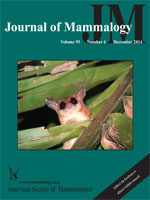Reconstructing the assembly of local ecological communities requires insight from a wide range of disciplines including biogeography, paleontology, ecology, and evolutionary biology. Community assembly depends on the availability of species in a regional species pool (a “biota”), which itself is assembled through a history of diversification, geographic range shifting, and adaptive responses to environmental change. The Great Basin contains a diverse mammal biota sorted into communities along elevational, latitudinal, and structural habitat gradients. Molecular genetic approaches have clarified the timing of diversification events in response to dynamic Neogene landscapes in several iconic Great Basin mammals, although the role of Great Basin landscape evolution on species diversification remains largely unexplored. Divergence continued into the Quaternary, as widespread species formed genetically unique lineages in and around the Great Basin. In response to Quaternary climatic oscillation, some mammalian species maintained their ranges whereas others exhibited dramatic range contractions or expansions, impacting the composition of regional species pools available for local community assembly. Advances will come from elucidating phylogenetic and phylogeographic structure in more taxa, but also from emerging genomic and modeling approaches to address how ecological traits, niche shifts, and adaptive evolution have influenced specific responses to dynamic landscapes and climates resulting in the species assemblages that characterize the Great Basin.
How to translate text using browser tools
1 December 2014
Assembling the modern Great Basin mammal biota: insights from molecular biogeography and the fossil record
Brett R. Riddle,
Tereza Jezkova,
Angela D. Hornsby,
Marjorie D. Matocq
ACCESS THE FULL ARTICLE

Journal of Mammalogy
Vol. 95 • No. 6
December 2014
Vol. 95 • No. 6
December 2014
climate change
cryptic lineage
cryptic species
geomorphology
intermontane region
North American Land Mammal Age (NALMA)
PHYLOGEOGRAPHY




